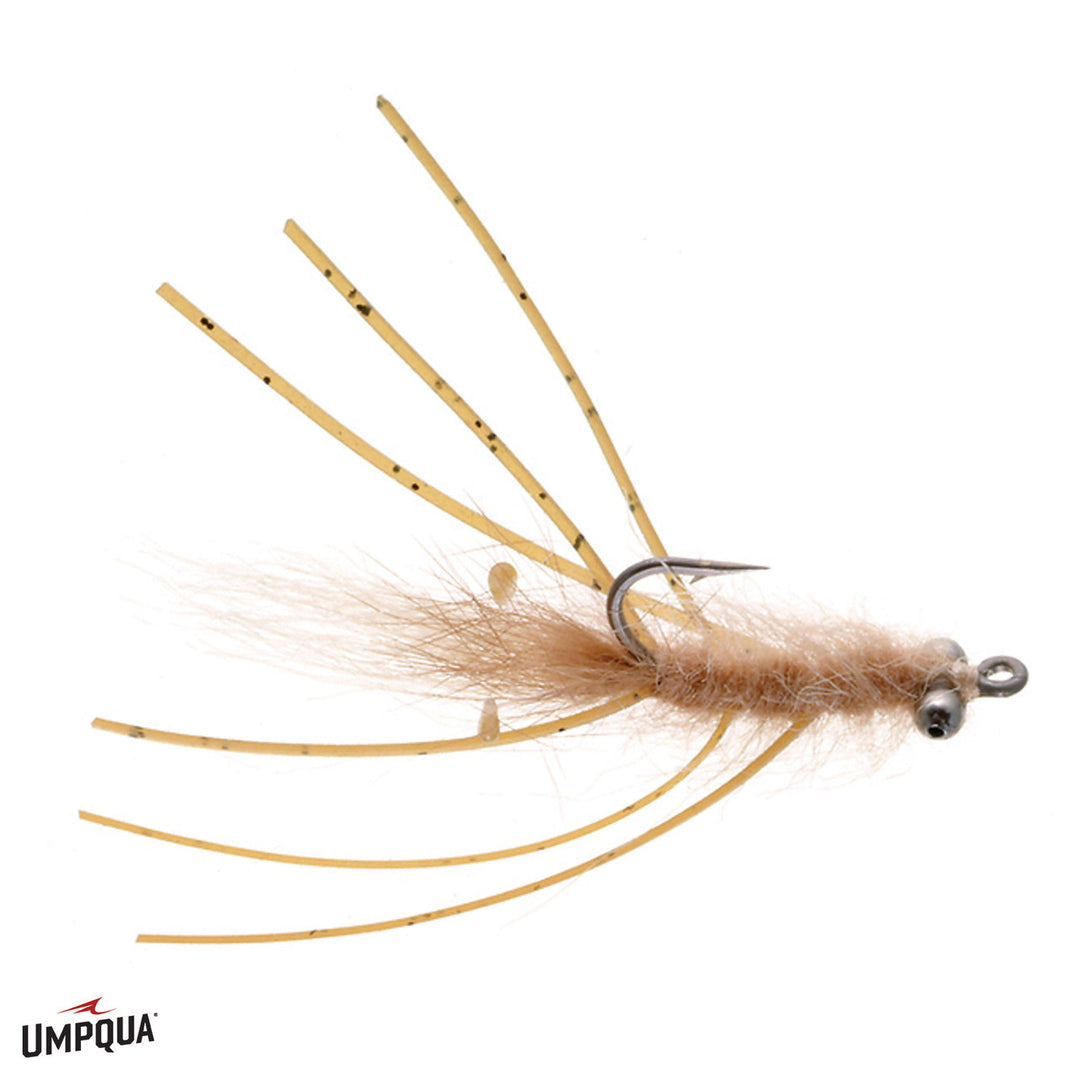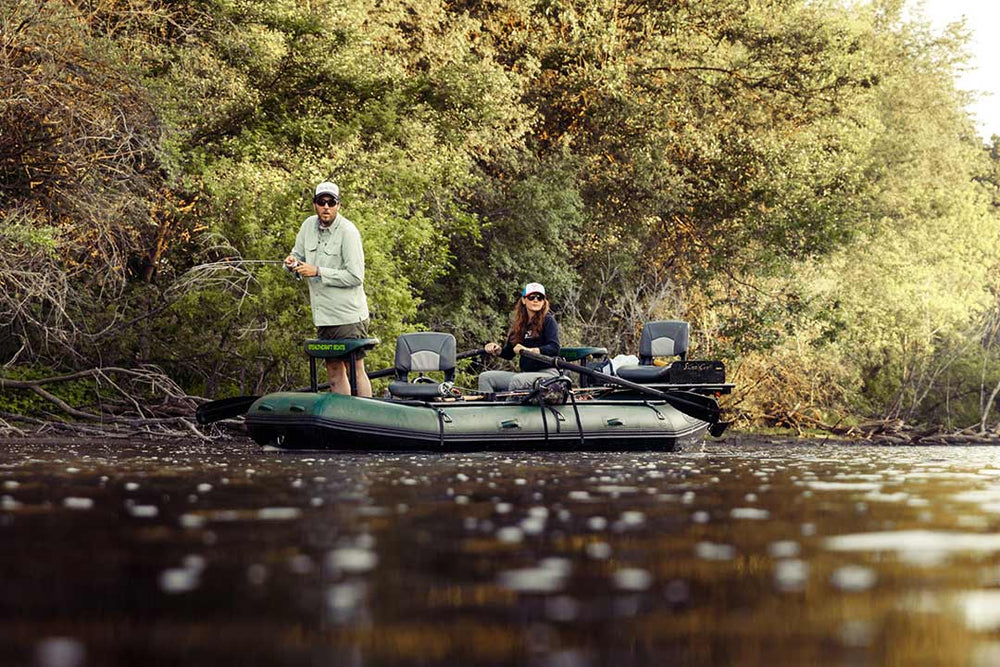
Umpqua Mantis Shrimp Fly
¡Todos los productos en stock se envían inmediatamente!
- Over 1000+ 5 Star Reviews

Join our email list and get 10% off. Plus stay in the know on new product drops, new videos, fishing reports, and exclusive discounts!

¡Todos los productos en stock se envían inmediatamente!
"When designing flies for predator fish I feel it’s best to match the prey they are feeding on. Most important are the size, shape and color. Size can easily be changed or matched by the size of the hook you tie on. Shape or silhouette must be built into a pattern so it resembles the prey you wish to represent. It should be a fly that’s easy to tie with basic materials, lands lightly, sinks fast and most important, catches fish. The bulky body on my Mantis pattern makes it land softly, and the bead chain eyes bring it to the critical zone. - One notable feature on all shrimp are their eyes. Eyes on real shrimp move and make them look like a creature from another planet. I have not figured out how to incorporate this component into a fly pattern so I used the standard burnt mono eyes. - For the carapace I tied in a tuft of tan rabbit fur. This material looks bulky in the water and displays the most enticing movement. Even at rest this material quivers with life. A slight current or a strip on the line will make this material pulse like no other. - Perhaps the most important feature on my Mantis Shrimp pattern are the legs and the way they are tied on. Most bonefish flies that include legs have them tied in all together in one area on the fly. To me this looks like a clump of legs or a dead shrimp. I wanted my pattern to simulate life so each leg had to be separate and act like a natural shrimp with lots of movement. It takes a little extra time to tie a fly in this manner but I feel this is what makes this fly so distinctive and deadly on wary bonefish. Over the years it has become one of the go to patterns used in the Bahamas and a standard in every fly box that travels to this area."
- Signature Tyer Bob Veverka taken from a feature awhile back from Deneki Outdoors

Because we know musky fools are not just in Wisconsin, we keep our entire selection online and ship all over the world.

